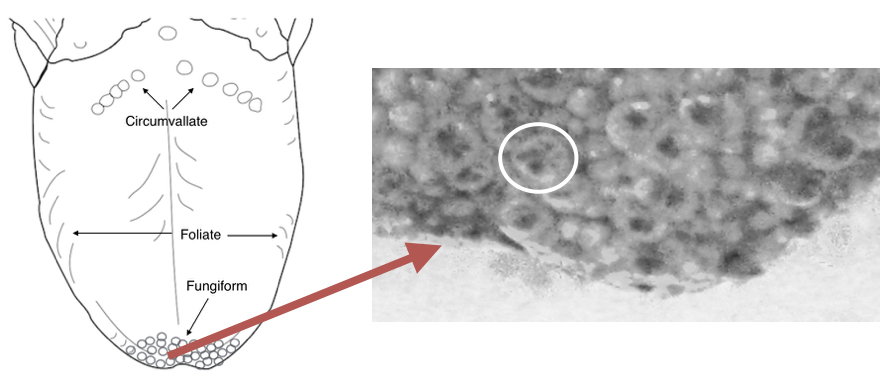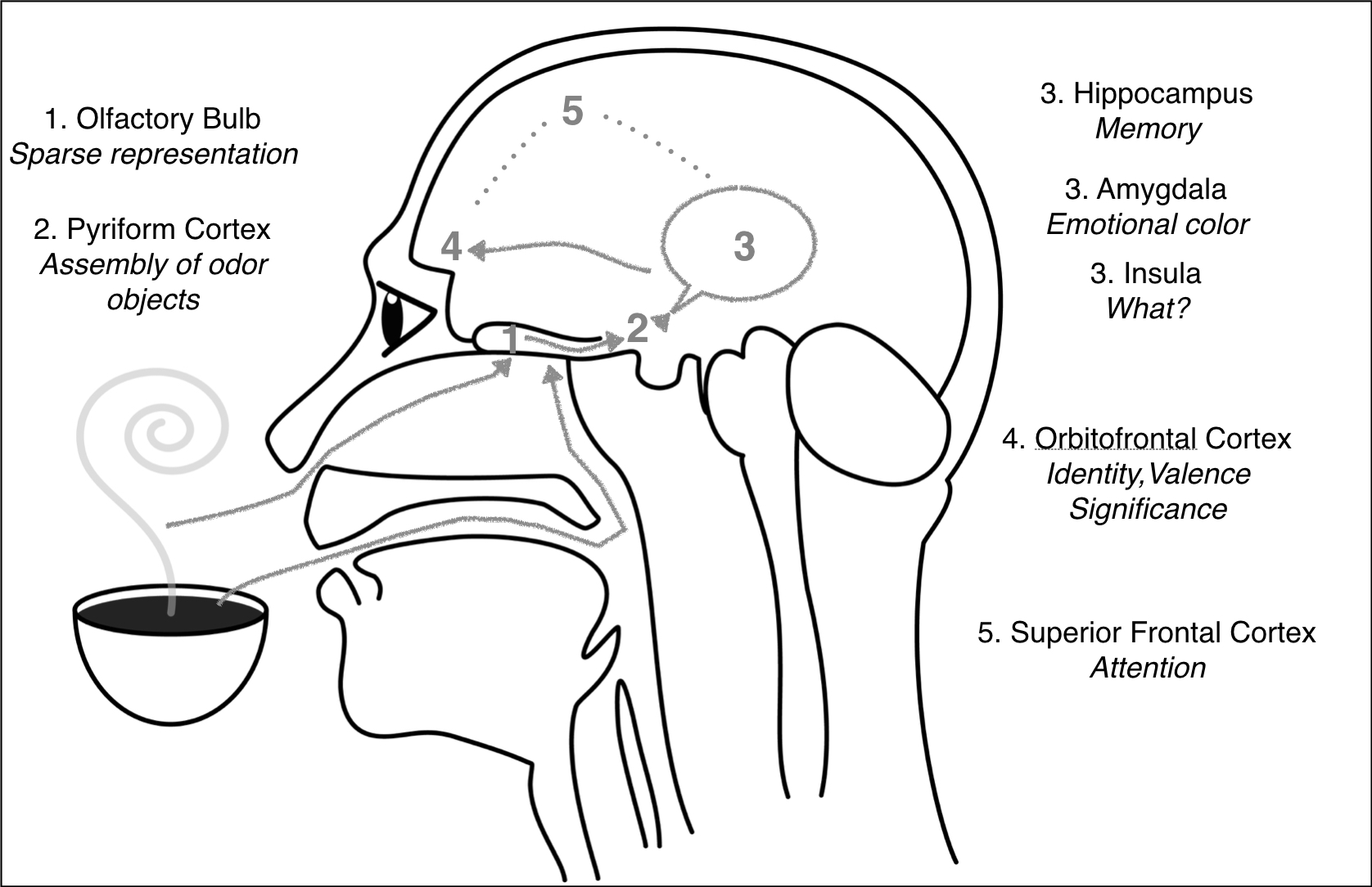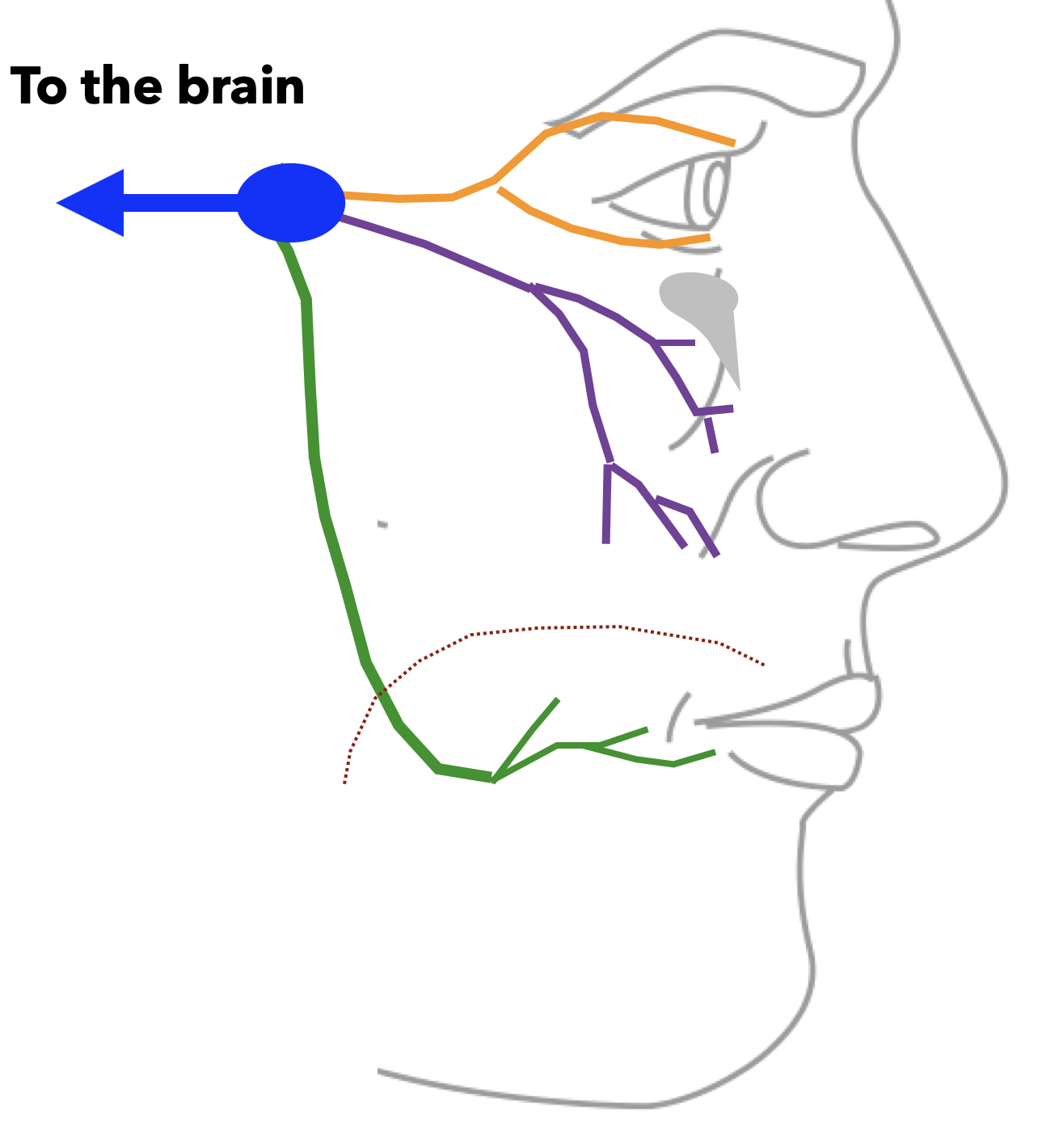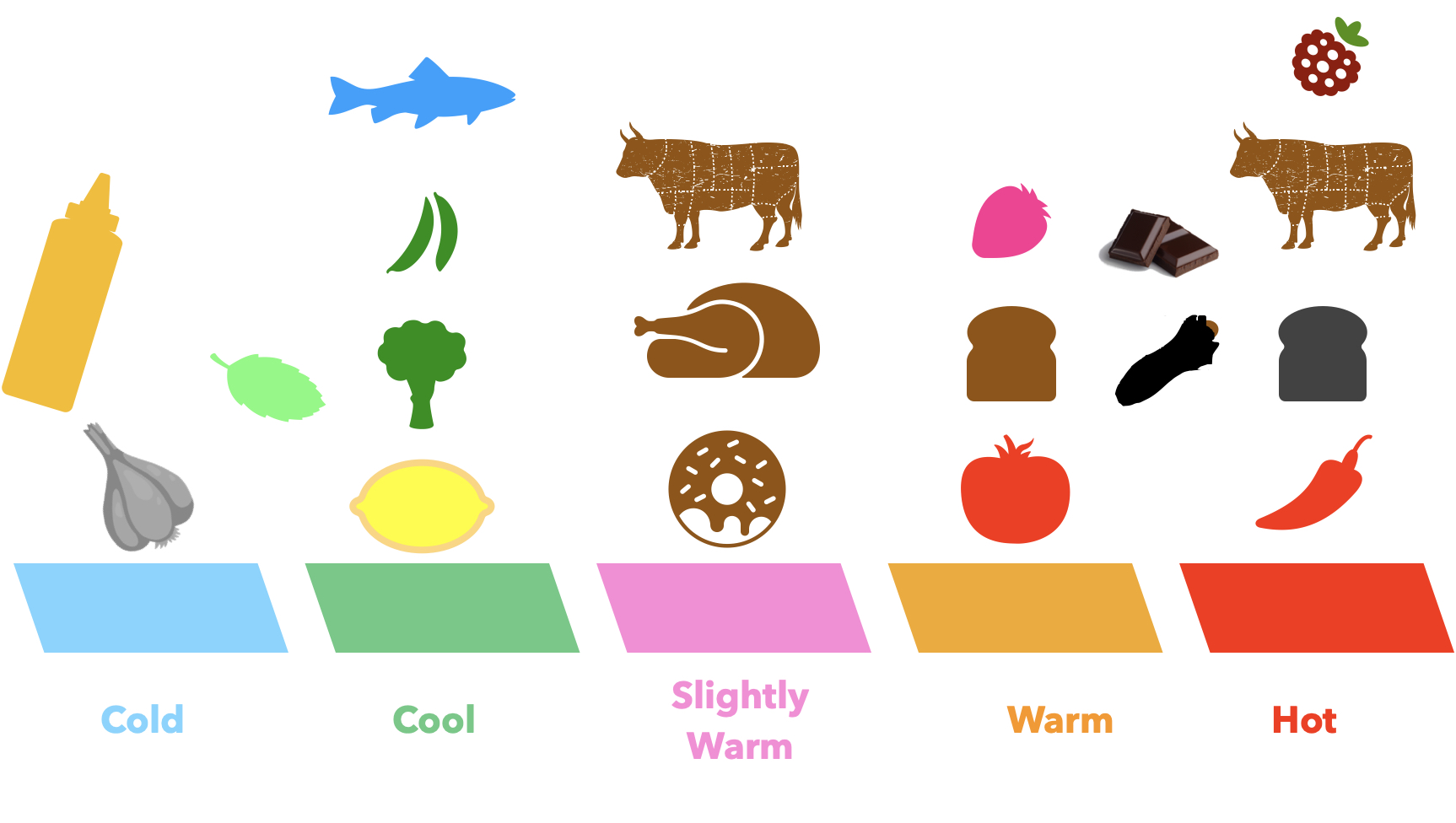
Tongue with taste buds
The tongue has three different kinds of taste papillae with taste buds. The tip is covered with fungiform papillae. The photo shows the tip of a tongue with fungiform papillae. You can see the pores that lead food and beverage chemicals to the taste buds.
The sides of the tongue have foliate papillae that are like leaves lined with taste buds.
At the back of the tongue is a chevron of circumvallate papillae. They get their name from the fact that they stick up like a tower, surrounded by a valley or moat, that catches the liquids that you are swallowing and exposes them to the taste buds that line the sides of the "tower."
We also have a scattering of taste buds in the roof of our mouth and down our throat!
Each taste bud houses cells that respond to taste—sweet, sour, salty, umami, and bitter, and also some fats and minerals. The trigeminal nerve also has endings in taste buds that respond to texture, temperature, wetness, as well as to chemicals in what we eat.
People differ in the number of taste papillae and taste buds they have in their mouth, as well as the sensitivity of their taste cells to different chemicals in the foods. These differences lead to individual differences in taste sensitivity.



